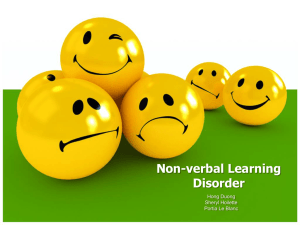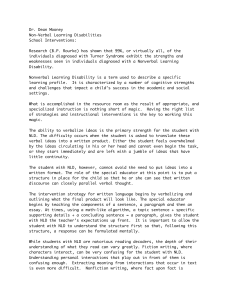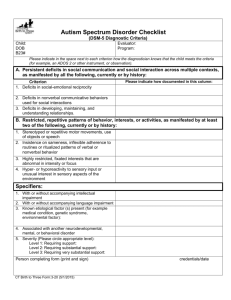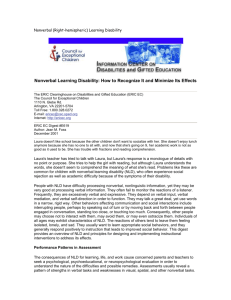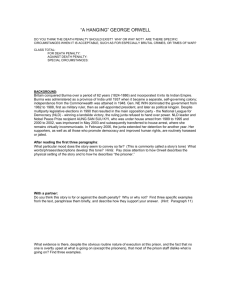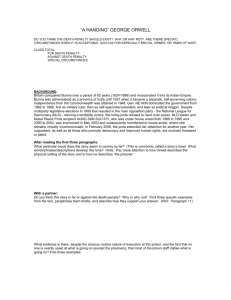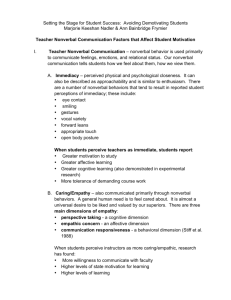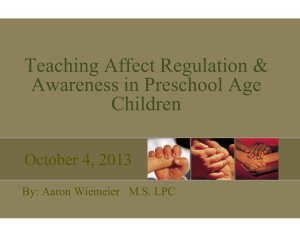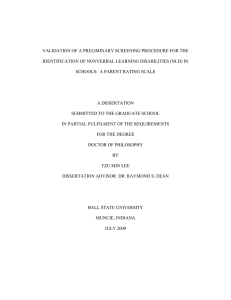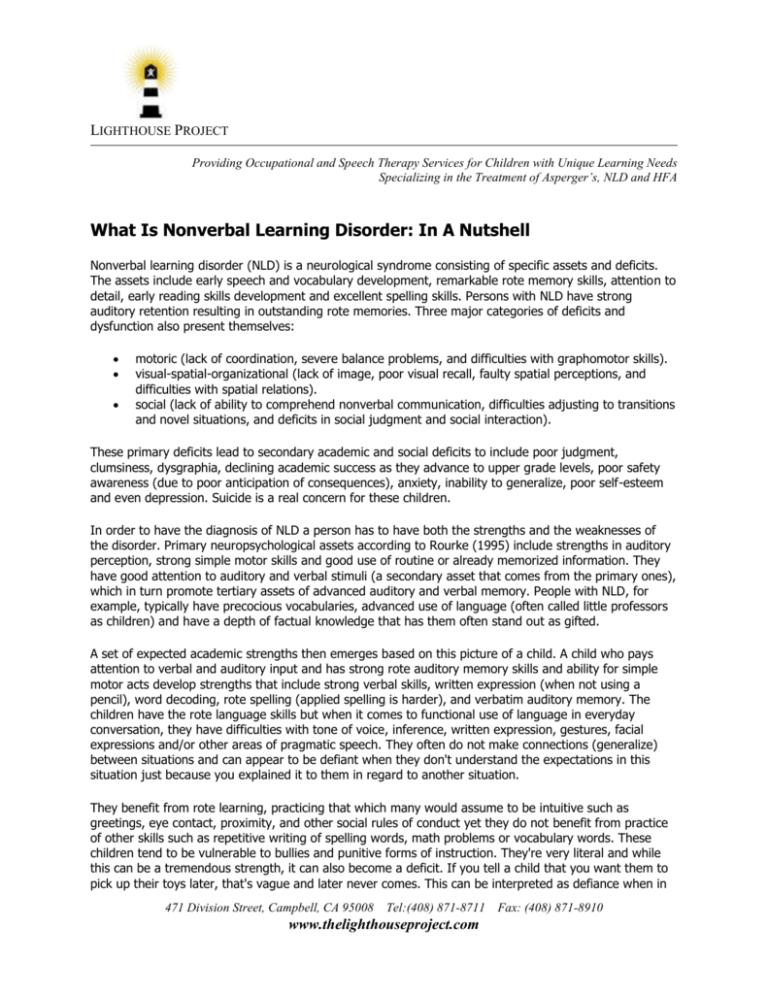
LIGHTHOUSE PROJECT
Providing Occupational and Speech Therapy Services for Children with Unique Learning Needs
Specializing in the Treatment of Asperger’s, NLD and HFA
What Is Nonverbal Learning Disorder: In A Nutshell
Nonverbal learning disorder (NLD) is a neurological syndrome consisting of specific assets and deficits.
The assets include early speech and vocabulary development, remarkable rote memory skills, attention to
detail, early reading skills development and excellent spelling skills. Persons with NLD have strong
auditory retention resulting in outstanding rote memories. Three major categories of deficits and
dysfunction also present themselves:
motoric (lack of coordination, severe balance problems, and difficulties with graphomotor skills).
visual-spatial-organizational (lack of image, poor visual recall, faulty spatial perceptions, and
difficulties with spatial relations).
social (lack of ability to comprehend nonverbal communication, difficulties adjusting to transitions
and novel situations, and deficits in social judgment and social interaction).
These primary deficits lead to secondary academic and social deficits to include poor judgment,
clumsiness, dysgraphia, declining academic success as they advance to upper grade levels, poor safety
awareness (due to poor anticipation of consequences), anxiety, inability to generalize, poor self-esteem
and even depression. Suicide is a real concern for these children.
In order to have the diagnosis of NLD a person has to have both the strengths and the weaknesses of
the disorder. Primary neuropsychological assets according to Rourke (1995) include strengths in auditory
perception, strong simple motor skills and good use of routine or already memorized information. They
have good attention to auditory and verbal stimuli (a secondary asset that comes from the primary ones),
which in turn promote tertiary assets of advanced auditory and verbal memory. People with NLD, for
example, typically have precocious vocabularies, advanced use of language (often called little professors
as children) and have a depth of factual knowledge that has them often stand out as gifted.
A set of expected academic strengths then emerges based on this picture of a child. A child who pays
attention to verbal and auditory input and has strong rote auditory memory skills and ability for simple
motor acts develop strengths that include strong verbal skills, written expression (when not using a
pencil), word decoding, rote spelling (applied spelling is harder), and verbatim auditory memory. The
children have the rote language skills but when it comes to functional use of language in everyday
conversation, they have difficulties with tone of voice, inference, written expression, gestures, facial
expressions and/or other areas of pragmatic speech. They often do not make connections (generalize)
between situations and can appear to be defiant when they don't understand the expectations in this
situation just because you explained it to them in regard to another situation.
They benefit from rote learning, practicing that which many would assume to be intuitive such as
greetings, eye contact, proximity, and other social rules of conduct yet they do not benefit from practice
of other skills such as repetitive writing of spelling words, math problems or vocabulary words. These
children tend to be vulnerable to bullies and punitive forms of instruction. They're very literal and while
this can be a tremendous strength, it can also become a deficit. If you tell a child that you want them to
pick up their toys later, that's vague and later never comes. This can be interpreted as defiance when in
471 Division Street, Campbell, CA 95008
Tel:(408) 871-8711
www.thelighthouseproject.com
Fax: (408) 871-8910
LIGHTHOUSE PROJECT
Providing Occupational and Speech Therapy Services for Children with Unique Learning Needs
Specializing in the Treatment of Asperger’s, NLD and HFA
fact it is a literal interpretation. However, that same child will only eat one piece of your See's Candy you
got for Christmas because you told them that was the rule. Working to understand what they understand
and what they don't can be a bit like being a detective: you have to ferret out the invisible rules that are
invisible to them. Some experts estimate that nonverbal communication accounts for 60-90% of our
communication. A child who has deficits in the ability to understand 60-90% of the language is often
confused, lost, and even depressed. They can feel hopeless when despite all their efforts, they continue
to fail at seemly simple tasks such as writing down homework, initiating a question to a teacher for
clarification and joining a group at lunch time.
Children with NLD have relative difficulty with mathematics, especially when they enter 3rd and 4th grade
when math skills become more abstract. (This does not mean they are always poor performers in math
but that, compared with their other skills, math is a relative weakness.) Unlike children with Asperger's,
they have difficulty understanding patterns and lining up columns of numbers in math. NLD effects
coordination. These children tend to be clumsy, are prone to falls and in general, have poor safety
awareness. They benefit when instructions are both verbal and visual to compensate for their inability to
formulate a visual picture when verbal instructions (only) are given.
One child put it this way, "Even though I'm good at reading and remembering, sometimes it takes me a
little longer to answer a question, because I cannot find the words. Because I'm focusing on what I want
to say, I talk too quickly. It also slows down my writing. On essay tests, I know the information, but I
have a difficult time getting it on paper. Sometimes even looking at the face of someone who is speaking
can be too much. I feel everyday the way other people feel in a crowded shopping mall just before
Christmas".
Children with Nonverbal Learning Disorders (NLD) have deficits in visual-spatial-organization, social skills
(especially social-cognition and social language) and motor skills. Areas to Evaluate and treat are global
and at times subtle. Teachers and therapists alike are frequently baffled by a child who can recite an
entire story verbatim and orally dictate a novel worthy of publication but is unable to turn in work, find
the bathroom or tie their shoes.
As a result of deficits in the tactile system, children with NLD syndrome often demonstrate poor early
writing (graphomotor) skills. They have poor reading comprehension because they have difficulty
imagining relationships such as cause and effect, comparing and contrasting, anticipating results of
behaviors. They demonstrate poor ability in mechanical arithmetic, mathematics, and science often due
to misalignments in the algorithms (alignments of numbers in columns) or spatial concepts (due to
inability to organize information into sequence) and problems forming abstract concepts from concrete
facts.
Children with nonverbal learning disorders typically have poor sensitivity for gaining and maintaining
balance. Due to poor tone and endurance, they have a tendency to develop a sedentary lifestyle with
little exploration of novel events. They tend to bump people/objects especially on their left side and have
very poor safety judgement. They avoid activities where they have to move rapidly through space which
will overwhelm their balance reactions and, thus, miss out on many social interactions and opportunities.
They have significant deficits in visual memory and their visual memories are unreliable. They cannot
"picture" the answer, days of the week, month etc and they can't count on perceiving information from
471 Division Street, Campbell, CA 95008
Tel:(408) 871-8711
www.thelighthouseproject.com
Fax: (408) 871-8910
LIGHTHOUSE PROJECT
Providing Occupational and Speech Therapy Services for Children with Unique Learning Needs
Specializing in the Treatment of Asperger’s, NLD and HFA
one day to the next. They tend to over-rely on left hemisphere strategies (rote learning) and will often
employ "self-talk" as a way to organize motor and cognitive tasks. They often miss the Gestalt (whole) of
overall pattern and, instead concentrate on the details, missing the meaning of text, pictures, social
events and conversations.
They have difficulty recognizing and interpreting facial expressions, postures and gestures, paralanguage
(tone, intensity, and loudness of voice), interpersonal distance and touch, rhythm and timing. They often
seem gullible, or innocent and can be the target of bullies. Despite their precocious vocabulary, NLD is
disorder of language impairment. These children have great difficulty interpreting non-literal language:
analogies, idioms, expressions. While they are often bright, even gifted, many children with NLD are
clueless about simple social facts. One example is a child with NLD who thought the "Pulitzer Prize" was
the "bullet surprise" and when his teachers told him his writing would someday win him the Pulitzer prize,
he felt confused and wondered why/when he would be shot for being a good writer.
Traditional behavior modification is seldom successful as these children need to understand what
invisible, non-verbal rule they have just broken. Unlike children with ADD, they need more words to help
them gain an understanding when they've misbehaved. These children need to learn via rote practice, to
interpret the cues from others so that they can take another's perspective and change their behavior
through understanding next time. A simple reward or withholding of recess will not only not benefit the
child but can, in fact, escalate the very behavior targeted for extinction. It can be useful in treatment
planning to address the needs of the child in three categories: changing the child through movement and
sensory integration techniques, change the environment to provide for greater opportunities for success
and select areas to provide compensatory mechanisms. Of all the strategies for success, being in a
supportive environment with understanding adults is often the key component to a child with NLD
succeeding or failing. While many of the interventions would be helpful for all children, they are essential
for children with NLD.
References
Klin, A., Sparrow S. S., Volkmar, F. R., Cicchetti, D. V., & Rourke, B. P. (1995). Asperger's syndrome. In
B. P. Rourke (Ed.), Syndrome of nonverbal learning disabilities: neurodevelopmental manifestations (pp.
93-118). New York: Guilford Press.
Minskoff, E. H. (1980). Teaching approach for developing nonverbal communication skills in students with
social perception deficits. Journal of Learning Disabilities, 13 (3), 118-124.
Myklebust, H. R. (1975). Nonverbal learning disabilities: assessment and intervention. In Myklebust H. R
.(Ed.), Progress in learning disabilities (vol. 3, 85-121). New York: Grune & Stratton.
Rourke, B. (1989b). Nonverbal learning disabilities: the syndrome and the model. New York, NY: Guilford
Press.
Rourke, B. P. (1995). Syndrome of nonverbal learning disabilities: neurodevelopmental manifestations.
New York: Guilford Press.
471 Division Street, Campbell, CA 95008
Tel:(408) 871-8711
www.thelighthouseproject.com
Fax: (408) 871-8910
LIGHTHOUSE PROJECT
Providing Occupational and Speech Therapy Services for Children with Unique Learning Needs
Specializing in the Treatment of Asperger’s, NLD and HFA
Rourke, B.P (1998) Significance of Verbal-Performance Discrepancies for Subtypes of Children with
Learning Disabilities in WISC-III Clinical Uses and Interpretation. Eds. Prifitera, A, and Saklofske, D.
Academic Press.
Rourke, B.P (1999) Nonverbal Learning Disorder: Key Note Speaker for 3rd Annual NLD Symposium,
Concord CA. Tape available on NLDline.com.
Thompson, S.T. (1997) The Source for Nonverbal Learning Disorders LinguiSystems, Inc. East Moline, IL.
Whitney, R (1999) Giftedness and Unique Learning: The Challenge to Parents SHARE Support Report, Vol
10: 4, p 1-3.
Whitney, R (2000) The Guide for Nonverbal Learning Disorders for Parents, Teachers, Therapists, and
Employers. Available from The Lighthouse Project 408 557 8598.
The Therapists employed by The Lighthouse Project are all college graduates with a minimum of a
Masters Degree in Occupational Therapy (OTR).
© Copyright 2002 - The Lighthouse Project - All Rights Reserved
471 Division Street, Campbell, CA 95008
Tel:(408) 871-8711
www.thelighthouseproject.com
Fax: (408) 871-8910


